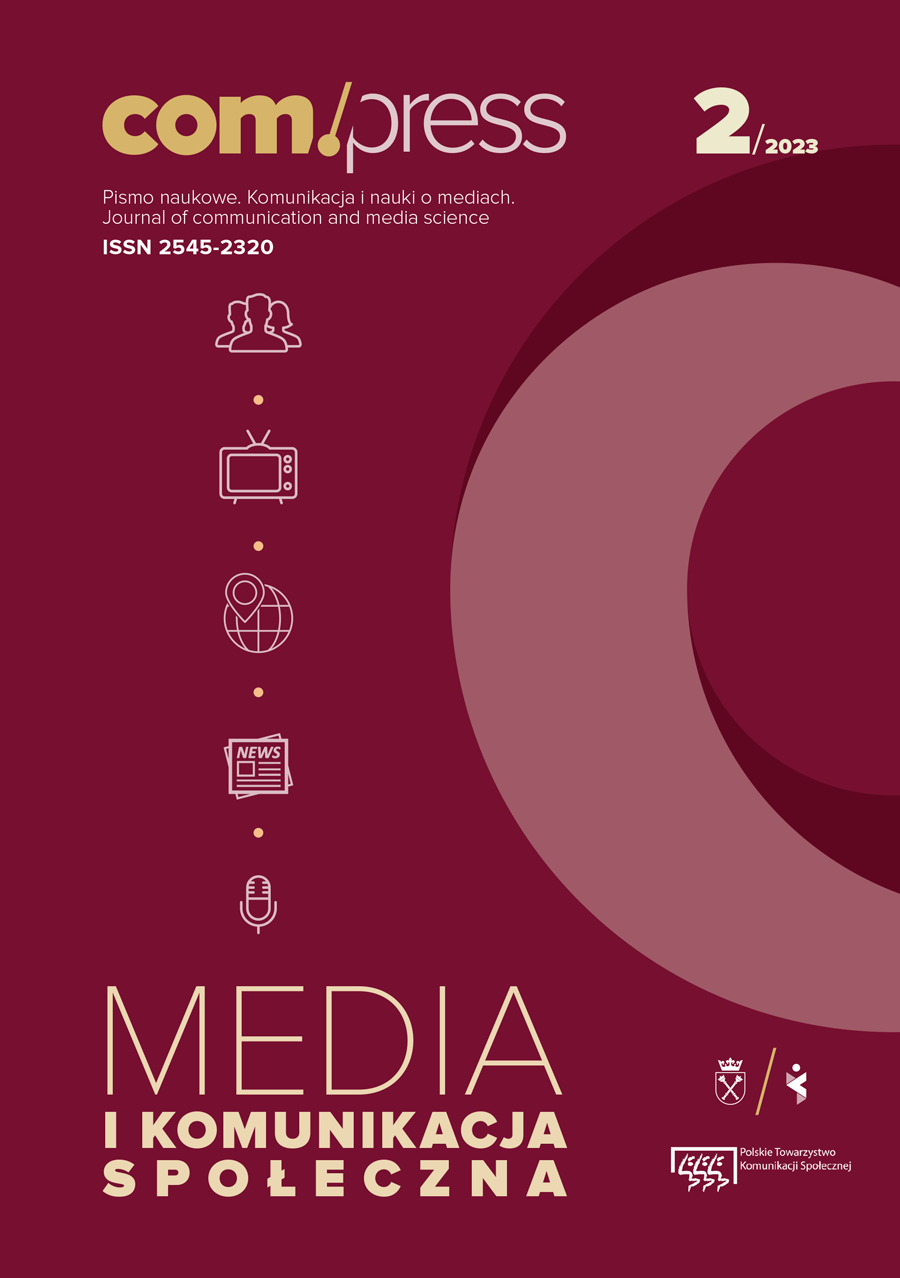Fascination of Para- And Pseudoscience-Related Information in Social Media During Global Pandemic
DOI:
https://doi.org/10.51480/compress.2023.6-2.617Keywords:
social media, pseudoscience, esotericism, social communicationAbstract
This article is an analysis of the issues related to the definition of pseudoscience and related terms, and presents the impact of the global pandemic on the growth of Internet users’ interest in occult, esoteric and witchcraft-related topics. In the context of this issue, the author cites historical events regarding researchers’ approach to the subject of witchcraft, including the so-called witch hunts that sparked worldwide interest in magic. In addition, the article also illustrates the increased interest in these topics, which was triggered by the religion of wicca, which introduced them anew, but in a positive context. It is worth noting that it was only the development of the Internet that popularized accounts and profiles of witches on such a large scale, as well as areas related to the pseudo-science of witchcraft. The last part of the article oscillates around the topic of the impact of the global pandemic on the development of interest in the above issues. The conclusions indicate a significant increase in the number of people watching channels related to pseudoscience..
References
Adams, A., Adams, M. (2003). Czary i czarownice. Historia i tradycje białej magii. Warszawa: Muza.
Ahlgren, M. (2021). 40 + statystyki i fakty na Instagramie dla 2020. Pobrano z: https://www.websitehostingrating.com/pl/instagram-statistics/ (25.05.2023).
Baranowski, B. (2021). Procesy czarownic w Polsce w XVII i XVIII wieku. Poznań: Replika.
Bockenheim, W., Bednarek, S., Jastrzębski, J. (1996). New Age. Encyklopedia Nowej Ery. Wrocław: Astrum.
Gardner, M. (1966). Pseudonauka i pseudouczeni. tłum. B. Krzyżanowski, W. Zonn. Warszawa: Wydawnictwo Naukowe PWN.
Grabski, M.B. (2011). Paranauka, pseudonauka i co z tego dla nas wynika. W: K. Korab (red.), Pseudonauka: choroba, magia czy biznes? (s. 18–19). Warszawa: Wydawnictwo Naukowe Scholar.
Hoffer, P. (1997). The Salem Witchcraft Trilas. A Legal History. Kansas: University Press of Kansas.
Hurd, P. (1998). Scientific literacy: New minds for a changing world. Science Education, 82 (3), 407–416.
Infor (2020). Koronawirus. Od 25 marca 2020 r. szkoły mają obowiązek zdalnego nauczania. Pobrano z: https://samorzad.infor.pl/sektor/zadania/oswiata/3633634,Koronawirus‑Od-25-marca-2020-r-szkoly-maja-obowiazek-zdalnego-nauczania.html (25.05.2023).
Kalisiewicz, D. (red.) (1999). Encyklopedia PWN w trzech tomach. t. 2. Warszawa: PWN.
Majchrzyk, Ł. (2020). Liczba pobrań TikToka przekroczyła 2 miliardy!. Pobrano z: https://mobirank.pl/2020/05/01/liczba-pobran-tiktoka-przekroczyla-2-miliardy/ (25.05.2023).
Mitcham, C. (2000). Ethical Issues in Pseudoscience: Ideology, Fraud and Misconduct. W: W.F. Williams, Encyclopedia of Pseudoscience. (s. 12). New York: Facts on File.
Muh, H. (oprac.) (2019). Młot na czarownice. Kraków: Vis-à-vis Etiuda.
Palonek‑Kozdęba, K. (2022). #WitchTok vs. Putin. Witchcraft Activism on the Internet in the Context of Russian Invasion of Ukraine. Maska, 2(49), 34–48.
Posacki, A. (2009). Encyklopedia zagrożeń duchowych. Mistyka, ezoteryzm, okultyzm. t. 1. Radom: Polskie Wydawnictwo Encyklopedyczne.
Ptaszek, R.T. (2015). Nowa era religii? Ruch NewAge i jego doktryna – aspekt filozoficzny. Lublin: Academicon.
Roskal, Z.E. (2019). Popularyzacja nauki a pseudonauka. W: S. Janeczek, M. Walczak, A. Starościc (red.). Metodologia nauk. cz. 1, Czym jest nauka? (s. 697). Lublin: Wydawnictwo Katolickiego Uniwersytetu Lubelskiego.
Schiff, S. (2019). Czarownice. Salem 1692. Warszawa: Marginesy.
Starhawk (1997). The pagan book of living and dying: practical rituals, prayers, blessings, and meditations on crossing over. New York: HarperOne.
Stępień, M.B. (2015). Okultyzm: studium ezoteryki zachodniej. Lublin: Academicon.
Thurston, R. (2008). Polowania na czarownice. Warszawa: Państwowy Instytut Wydawniczy.
Wojciechowski, T. (1981). Z zagadnień parapsychologii. Analecta Cracoviensia, XIII.
Woolf, M. (2023). TikTok – najciekawsze statystyki [2023]. Pobrano z: https://passport-photo.online/pl/blog/tiktok-statystyki/ (30.05.2023).
Zwoliński, A. (2019). Współczesne czarownice. Poznań: Monumen.
Downloads
Published
How to Cite
Issue
Section
License
Copyright (c) 2024 Polish Communication Association

This work is licensed under a Creative Commons Attribution-ShareAlike 4.0 International License.
Content of the articles is licensed under a Creative Commons Attribution 4.0 International license





